Over the years it's interesting to see that besides the usage of common trees such as Oak, Acacia, Maple, Mahogany humankind has been innovating in using many more varieties. With promising harvesting, handling and processing it's amazing to see how many diverse materials we can use. Not just that, each of them brings to the table (ya table) diverse textures, patterns and colors. Home decor and home design benefit immensely from these diverse types of wood. Let's have a look at five of the trending wood types.
5 Latest Wood types used for furniture and home decor.
What is Mango Wood
What is Mango Wood
Mango wood is resident to the lands of SouthEast Asia, places like Myanmar and India. As the name suggests it comes from mango trees. Over the years Mango wood is now being harvested in Brazil, Hawaii and a few other parts of the world.
Mangifera indica was brought to East Asia between the 4th and 5th century BC. With the establishment of water trade routes operated by the Portuguese, the Mango tree in the 16th century AD reached the Philippines, Brazil, and Africa, where it has flourished ever since
Why is Mango Wood eco-friendly?
Mango Wood is more sustainable than oak or teak due to a few reasons. Mango trees reach maturity in 7 to 15 years depending on the species. On the other hand a teak or oak tree maturity ranges from 30-40 years. The sheer difference makes us realize the volume of water, resources and sustainability difference they both have. All wood is beautiful in its own way but when it comes to the planet it's a welcome thought to understand these nuances.
Thus Mango wood is sustainable, eco friendly and planet friendly.
Uses and texture of Mango Wood
Now coming back to the texture and use. Once a mango tree reaches full maturity and stops producing mangoes, that is the time farmers are open to its use for mango wood. This commercial use helps many small and big farmers who can use the finances for their farms and needs.
The beautiful color of mango wood can vary from light to dark shades of brown, though golden brown is the most common shade one naturally gets. It can have beautiful streaks and with maturity can also change color naturally and darken. This depends on the finishing. It's durable and a hardwood which can be refinished and used with great versatility. It's not just used in furniture and decor but also for musical instruments such as ukuleles.
At BlueGrape Studio we absolutely love sourcing and curating products harnessing the beauty and sustainability of mango wood.
-
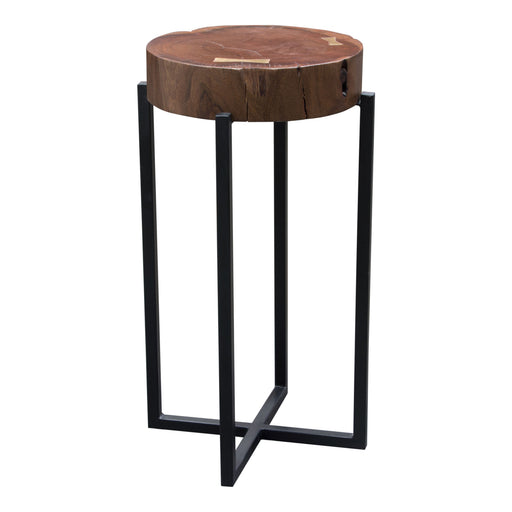
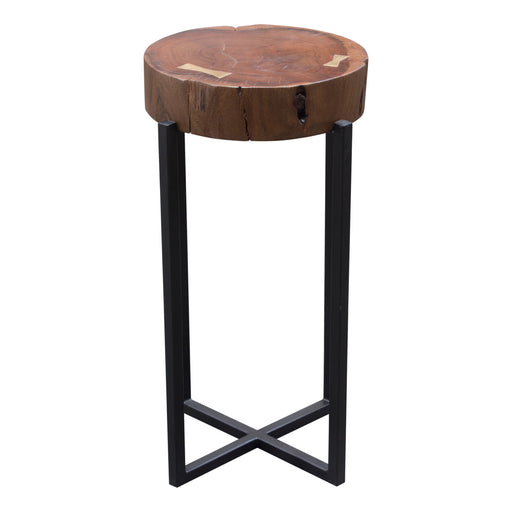 Sale
Sale
Alex the Solid Mango Wood Table
Original price $200.00Original price $200.00 - Original price $200.00Original price $200.00Current price $180.00$180.00 - $180.00Current price $180.00The Alex Accent Table features a round Solid Mango Wood Top in Walnut finish with Gold Metal Inlay accent detail atop an Iron criss-cross base. Sim...
View full detailsOriginal price $200.00Original price $200.00 - Original price $200.00Original price $200.00Current price $180.00$180.00 - $180.00Current price $180.00Sale -
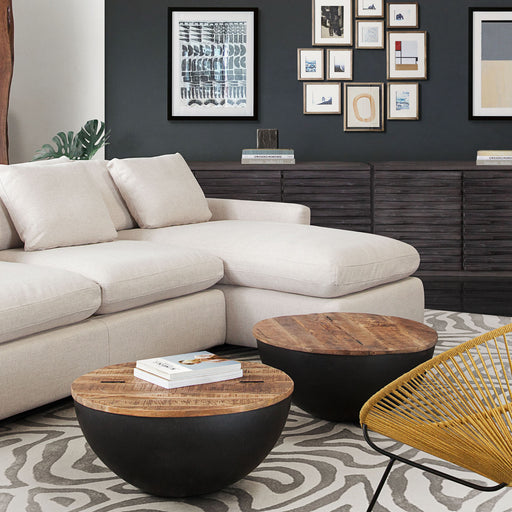
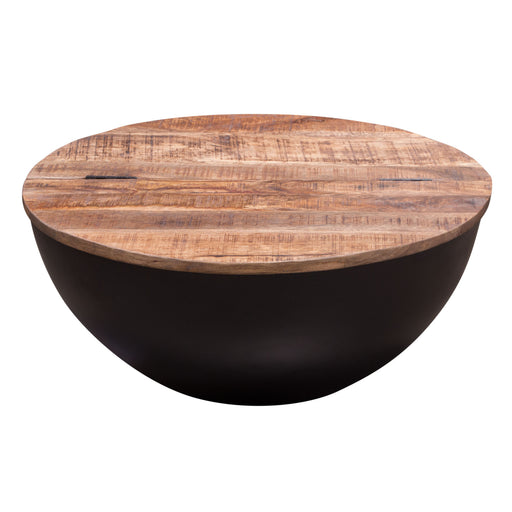
Salem Round Drum Table in Mango Wood
Original price $462.00 - Original price $462.00Original price$462.00$462.00 - $462.00Current price $462.00The Salem Storage Drum Cocktail Table features a natural Solid Mango Wood Flip-Top Lid with a unique metal drum base. It brings a vintage and rugge...
View full detailsOriginal price $462.00 - Original price $462.00Original price$462.00$462.00 - $462.00Current price $462.00 -
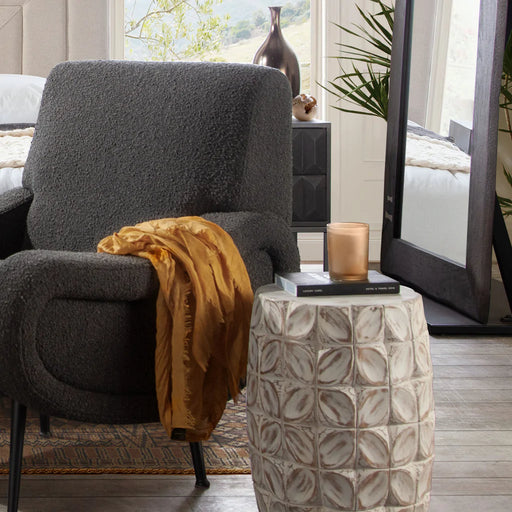
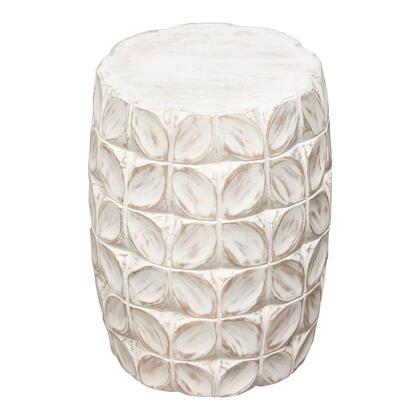
Fig Mango Wood Accent Table
Original price $300.00 - Original price $300.00Original price$300.00$300.00 - $300.00Current price $300.00The Fig Accent Pedestal features a solid Mango Wood pedestal in Distressed White finish with a Leaf Motif detail. Ideal addition to any room's dé...
View full detailsOriginal price $300.00 - Original price $300.00Original price$300.00$300.00 - $300.00Current price $300.00 -
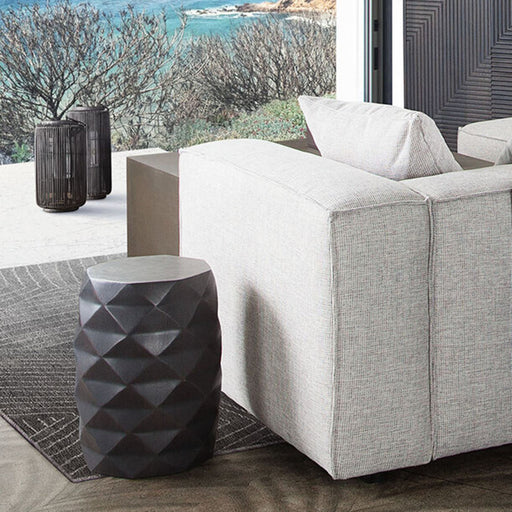
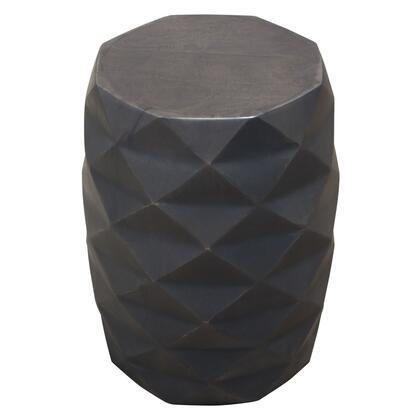
Fig Mango Wood Accent Table
Original price $300.00 - Original price $300.00Original price$300.00$300.00 - $300.00Current price $300.00The Fig Accent Pedestal features a solid Mango Wood pedestal in Grey finish with a Geometric Motif detail. Ideal addition to any room's décor. ...
View full detailsOriginal price $300.00 - Original price $300.00Original price$300.00$300.00 - $300.00Current price $300.00
TREMBESI WOOD
What is Trembesi Wood and Monkeypod Wood
Another exotic wood, the Trembesi or Monkeypod Wood, is found in the regions of Indonesia, South and Central America. It comes from a tree called Albizia Genus or Albizia Saman. It is also known as Suar wood or Monkeypod. The key feature of this wood is contrast, you will often see a mix of light and a dark streak, deep grains, here and there. It has a rich and deep look and can create some stunning pieces of furniture. Its weight is similar to Acacia and Teak. Trembesi or Monkeypod is dried over time and sometimes in hot kilns before being used for creating beautiful pieces. Due to its crisscrossed interlocking grains, it is resistant to decay and sought for its strength.
How is Trembesi, Monkeypod eco friendly?
The tree grows up to 100 to 200 ft in diameter and is widespread. It spans up to 50-80 ft in height. They grow fast and are widespread across regions making them eco friendly and sustainable currently. They are farmed as well and grow easily in tropical climates.
Where did the name Monkeypod come from
The name Monkeypod came as these trees have seed pods with sweet sticky flesh. Monkeys used to gather in large numbers given the widespread diameter of this tree and eat the sweet pod. Thus the name Monkeypod!
-
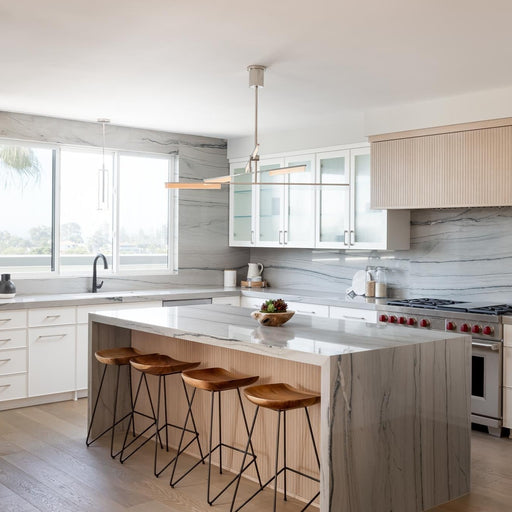
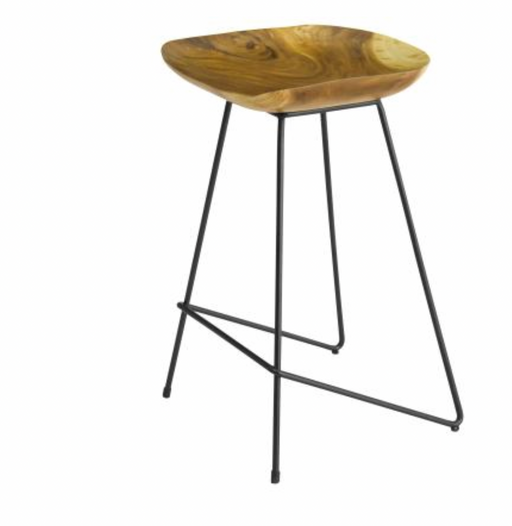
Naya Trembesi Wood Counter Stool
Original price $300.00 - Original price $300.00Original price$300.00$300.00 - $300.00Current price $300.00The natural flair makes the Naya stool unique. Handcrafted of Trembesi wood, contrasted with Black Rust steel legs there is nothing to not love a...
View full detailsOriginal price $300.00 - Original price $300.00Original price$300.00$300.00 - $300.00Current price $300.00
RATTAN
What is Rattan?
Rattan, known for many years as the harbinger of stylish pieces - from accent pieces, benches, nightstands and more. The Rattan plant is part of the Palm family but it is a vine or creeper. South East Asia accounts for over 80% of the world’s Rattan growth.
How is it used for furniture?
Harvesting Rattan involves avoiding its sharp thorny layer and is a skill many local farmers excel at. For many countries harvesting rattan from the deep forests, farms and supplying it for furniture is a key source of livelihood. There are almost 40 varieties of Rattan which are used for furniture. Post harvesting, some are cured and smoked to get its earthy brown and ochre colors. A lot of prep goes into getting that beautiful piece into your home!
How is Rattan Eco-Friendly?
When it comes to sustainability Rattan re-grows in 5-7 years making it far more eco-friendly than teak and oak. It lasts for generations, its strong, not hollow and sturdy.
At BlueGrape we love products in Rattan for their warmth and intricacies.
-
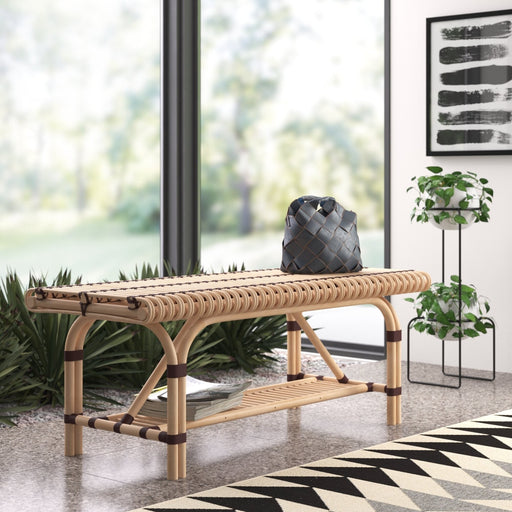
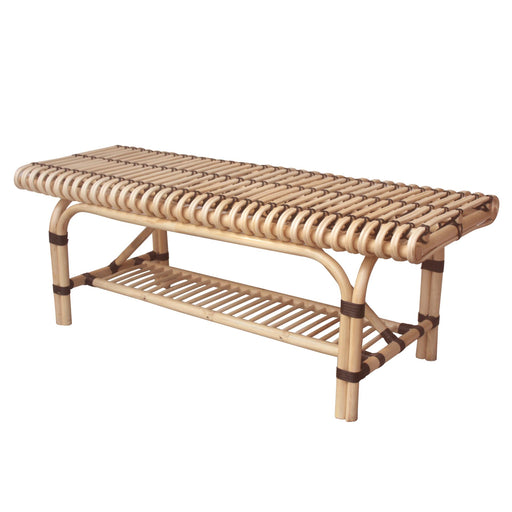 Sale
Sale
Essence Rattan Bench
Original price $480.00Original price $480.00 - Original price $480.00Original price $480.00Current price $430.00$430.00 - $430.00Current price $430.00This Rattan Bench bench will quickly become a prized accent in your home. The Rattan is bent, dyed and tied to create this design, for a look that ...
View full detailsOriginal price $480.00Original price $480.00 - Original price $480.00Original price $480.00Current price $430.00$430.00 - $430.00Current price $430.00Sale -
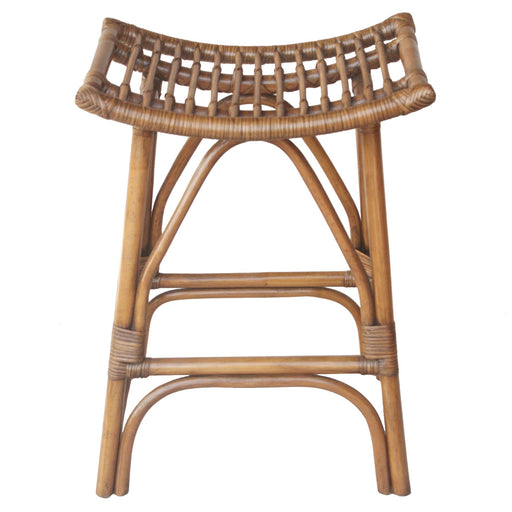
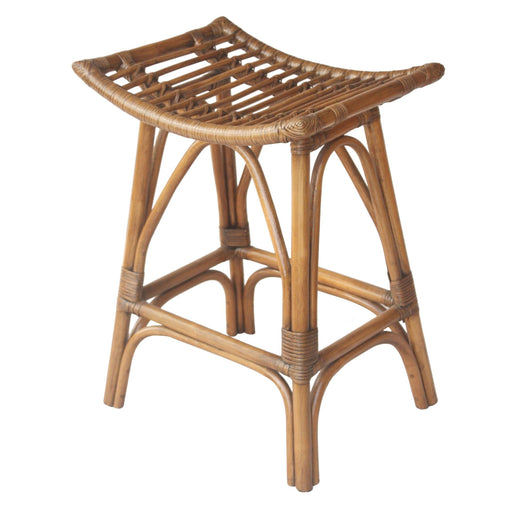
Luau Rattan Counter Stool
Original price $250.00 - Original price $250.00Original price$250.00$250.00 - $250.00Current price $250.00The 24" seat height counter stool is an all-time favorite! The gently curved saddle seat sits atop a thick bent rattan frame for style and sturdine...
View full detailsOriginal price $250.00 - Original price $250.00Original price$250.00$250.00 - $250.00Current price $250.00 -
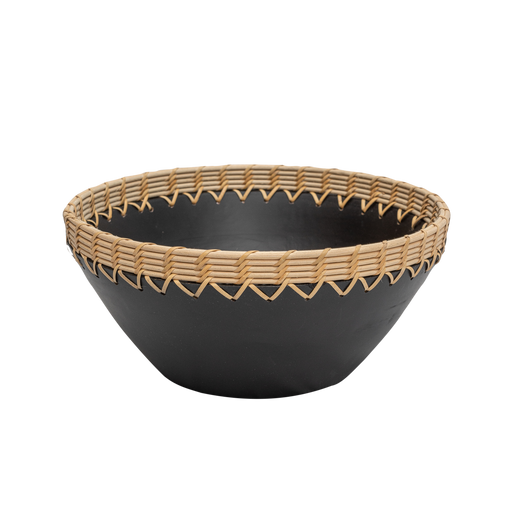
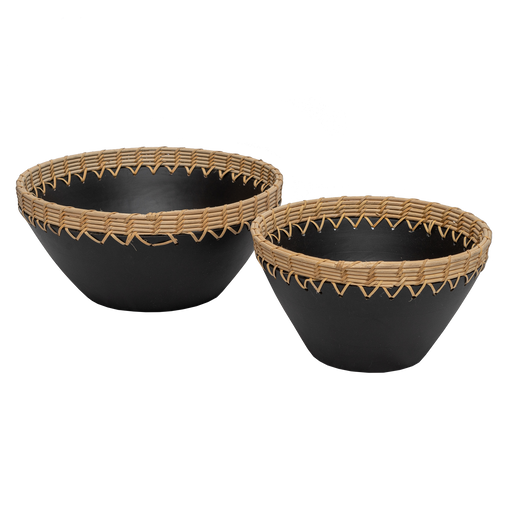
Tribal Woven Bowls - Set of 2
Original price $50.00 - Original price $50.00Original price$50.00$50.00 - $50.00Current price $50.00Smooth and sleek with an intricate woven border this set of 2 bowls is a stunner. The rattan weave on the sides is reminiscent of a beautiful tr...
View full detailsOriginal price $50.00 - Original price $50.00Original price$50.00$50.00 - $50.00Current price $50.00 -
 Sale
Sale
Rattan Bali Accent Table
Original price $350.00Original price $350.00 - Original price $350.00Original price $350.00Current price $280.00$280.00 - $280.00Current price $280.00Made of natural Rattan, the woven base reaches up to the round top gracefully and makes a great accent piece. You can use it as a side table, too, ...
View full detailsOriginal price $350.00Original price $350.00 - Original price $350.00Original price $350.00Current price $280.00$280.00 - $280.00Current price $280.00Sale
PAULOWNIA WOOD
The lightest of timber woods is the Paulownia Wood. It is light, fine grained and one of the fastest growing hardwoods coming from the tree known as Paulownia (of course!) or Empress. As deforestation permeated many parts of the world including the US the search to find fast growing, sustainable wood increased. Paulownia grows at steep inclines, grows fast and thus can be grown repeatedly. There are almost 17 species of Paulownia trees and they vary in usage. Grown for thousands of years in Japan and China, native to China, one can now find these trees in some other parts of the world. But these trees which are native to China are still found largely in those areas.
How is Paulownia Eco-Friendly?
Paulownia trees are disease resistant and knot free, reducing wastage and optimizing usage. They can grow from 6 to 13 feet in one year making them very usable and eco-friendly. They reach a height of 15 feet in 10 mature years. One thing to remember though is that the roots of the tree are invasive so farming them with care is vital.
-
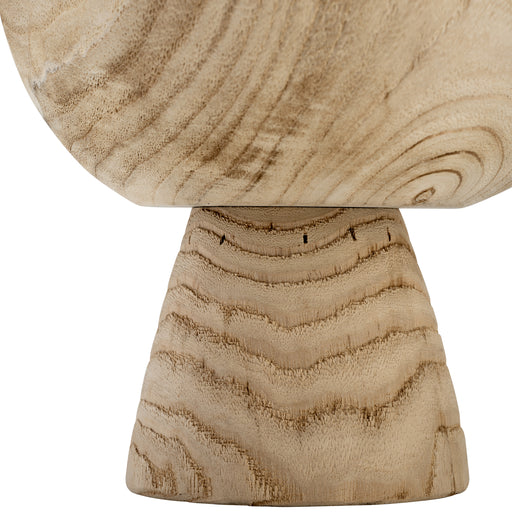
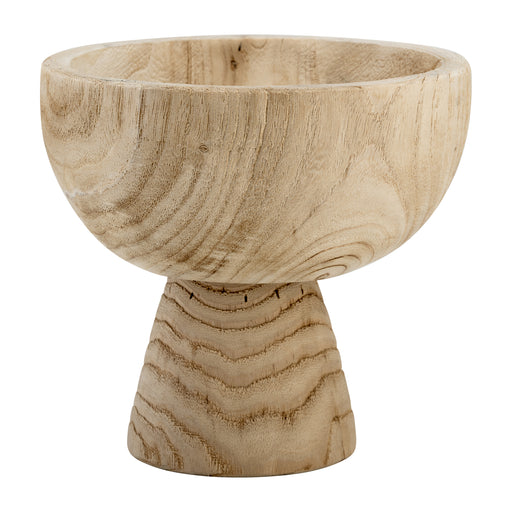
WOODSY ORGANIC BOWL
Original price $35.00 - Original price $35.00Original price$35.00$35.00 - $35.00Current price $35.00The wood bowl made in natural and sustainable Paulownia wood is neutral, earthy and so good to look at. It has a rich earthy texture and you will s...
View full detailsOriginal price $35.00 - Original price $35.00Original price$35.00$35.00 - $35.00Current price $35.00 -
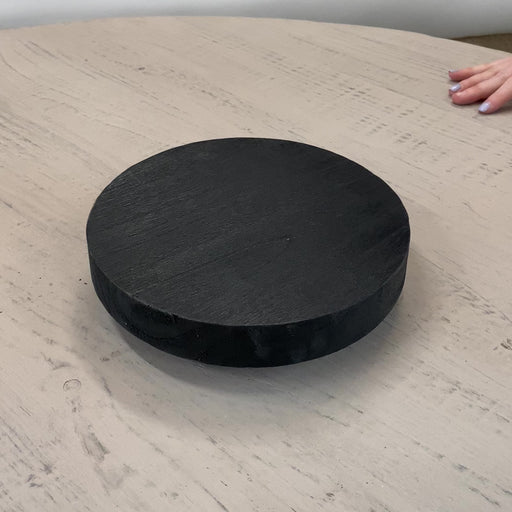
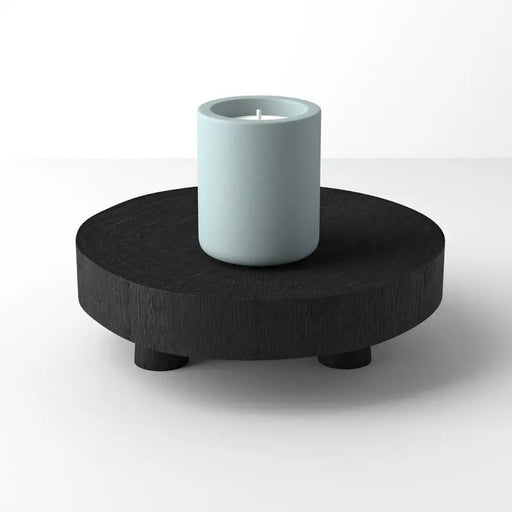
Paulownia Wood Coffee Table Tray in Black
Original price $11.00 - Original price $11.00Original price$11.00$11.00 - $11.00Current price $11.00Beautify your coffee table with this stylish and functional Paulownia Wood Tray! Crafted from durable wood, this tray is perfect for serving snacks...
View full detailsOriginal price $11.00 - Original price $11.00Original price$11.00$11.00 - $11.00Current price $11.00 -
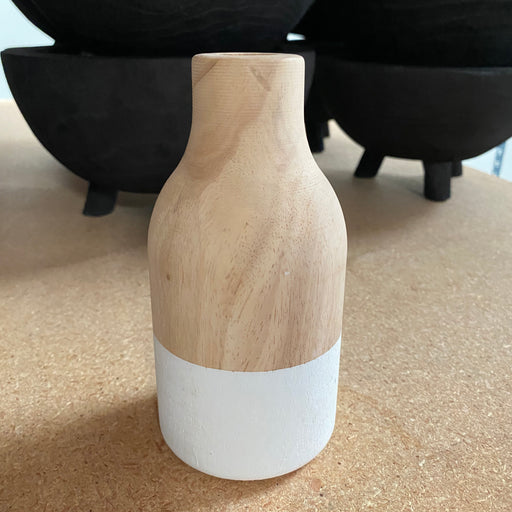
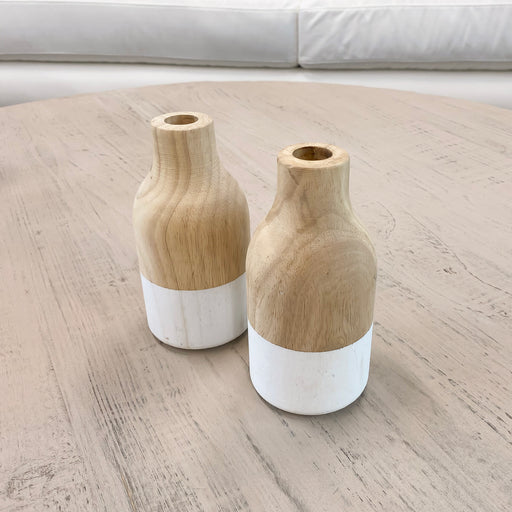
White Paulownia Decor, set of 2
Original price $24.00 - Original price $24.00Original price$24.00$24.00 - $24.00Current price $24.00Add some style to your living space with this Paulownia Vase! With two choices to pick from - black or white - you can’t go wrong with either. Show...
View full detailsOriginal price $24.00 - Original price $24.00Original price$24.00$24.00 - $24.00Current price $24.00 -


Wooden Artisan Bowl with 3 legs
Original price $20.00 - Original price $20.00Original price$20.00$20.00 - $20.00Current price $20.00Add a unique touch to your table decor with this Wooden Artisan Bowl! It's designed with natural wood grain. This handmade bowl is sure to be a con...
View full detailsOriginal price $20.00 - Original price $20.00Original price$20.00$20.00 - $20.00Current price $20.00 -
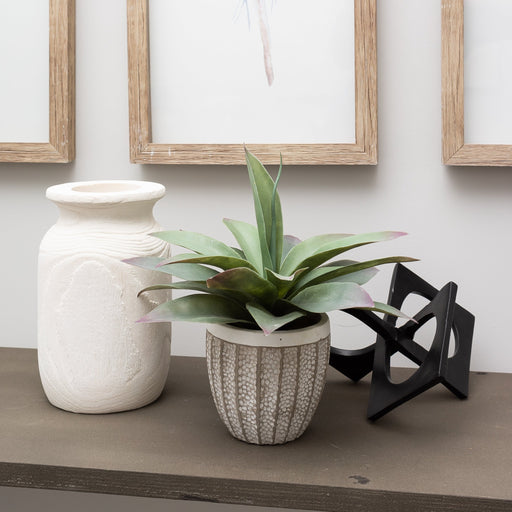
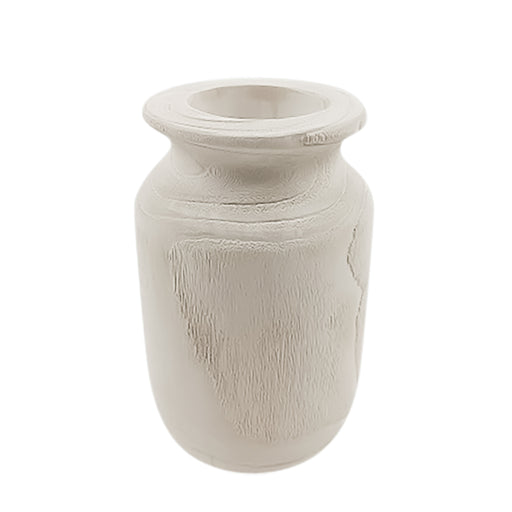
Paulownia Wood Organic Vase, White
Original price $55.00 - Original price $55.00Original price$55.00$55.00 - $55.00Current price $55.00Wood, 6"d Unique Vase, White, the perfect home decor accessory to accent any corner, entryway or table in your living room, bedroom, and office. C...
View full detailsOriginal price $55.00 - Original price $55.00Original price$55.00$55.00 - $55.00Current price $55.00
BAMBOO
Let's start with saying Bamboo is not really a wood but scientifically categorized as a grass. The stalky bamboo stalks are woven together or now even glued together to create some strong wood boards. Surprisingly mankind has innovated in not just using Bambii for intricate furniture but also larger scale pieces.
How is Bamboo Eco-Friendly?
A Bamboo tree takes just 4 years on an average to reach 40 feet making it eco friendly and sustainable.It requires very little water and doesn't need much fertilizers. Bamboo plants release 30-35% more oxygen in the air than other plants. All these incredible features make it eco-friendly.
Usage of Bamboo
Bamboo is 2-3 times stronger than timber and used for making houses in many countries. It predominantly grows in Asia, Latin America and Africa along with some parts of Southern United States and China.Besides furniture Bamboo is making its mark in clothing, agriculture and building material. It makes for beautiful flooring and in many countries you will see it on the wall for texture and interest. It blends in to create perfectly zen like environments.
-
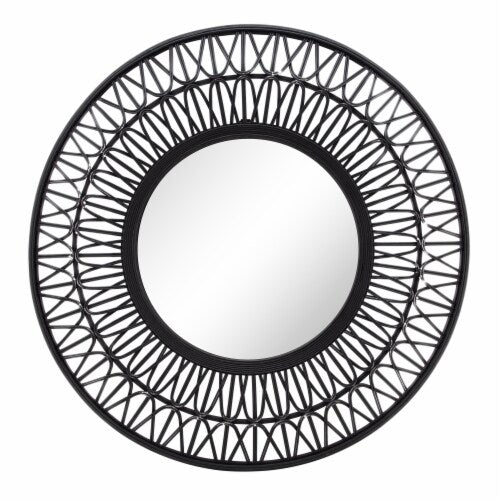 Sale
Sale
Bamboo Wall Mirror
Original price $180.00Original price $180.00 - Original price $180.00Original price $180.00Current price $153.00$153.00 - $153.00Current price $153.0036" Bamboo Wall Mirror. Black in color. Little beads detailed around the mirror. Place it alone or bring in some colorful accents around it for an ...
View full detailsOriginal price $180.00Original price $180.00 - Original price $180.00Original price $180.00Current price $153.00$153.00 - $153.00Current price $153.00Sale -
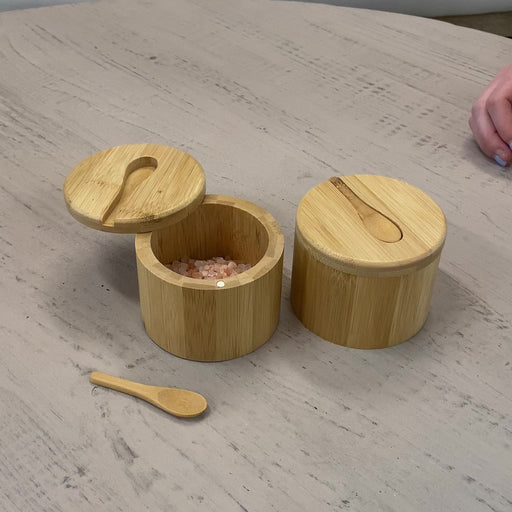
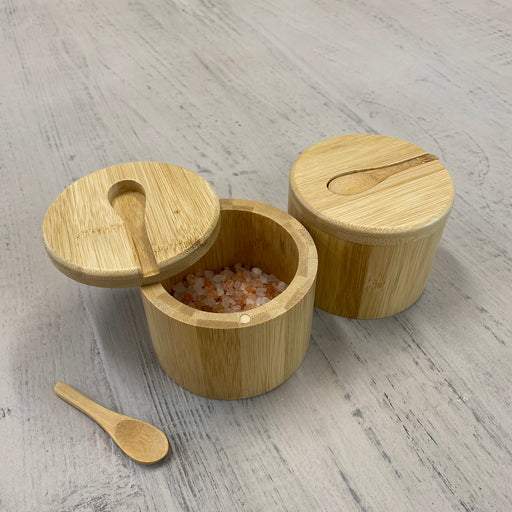
Umami - Bamboo Wood Spice and Herb Cellars Set of 2
Original price $12.00 - Original price $12.00Original price$12.00$12.00 - $12.00Current price $12.00Add some spice to your life with this Spice storage Bowl! Crafted from bamboo, this salt cellar with a swiveling lid and matching spoon is ready to...
View full detailsOriginal price $12.00 - Original price $12.00Original price$12.00$12.00 - $12.00Current price $12.00 -
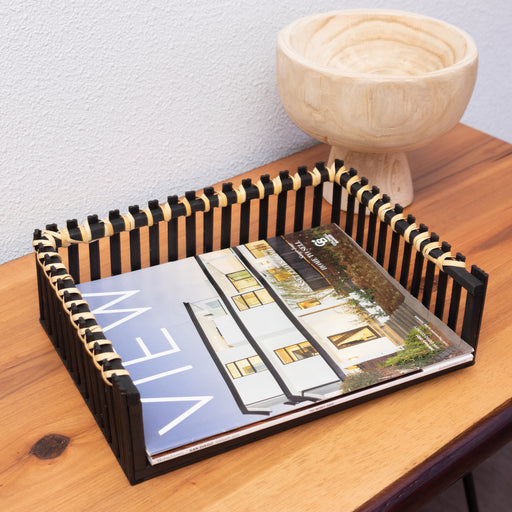

THE HOBBIT TRAY - Black
Original price $20.00 - Original price $20.00Original price$20.00$20.00 - $20.00Current price $20.00Inspired by nature and the charming village of Hobbiton this tray is nature inspired. Made of rattan and a strong weave its the perfect tray to org...
View full detailsOriginal price $20.00 - Original price $20.00Original price$20.00$20.00 - $20.00Current price $20.00 -


THE HOBBIT TRAY
Original price $20.00 - Original price $20.00Original price$20.00$20.00 - $20.00Current price $20.00Inspired by nature and the charming village of Hobbiton this tray is nature inspired. Made of rattan and a strong weave its the perfect tray to org...
View full detailsOriginal price $20.00 - Original price $20.00Original price$20.00$20.00 - $20.00Current price $20.00 -
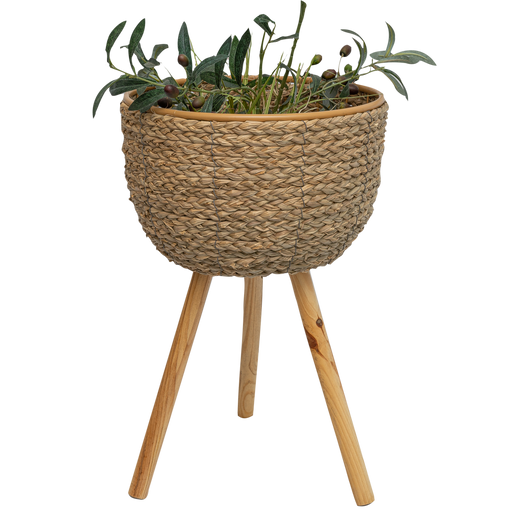
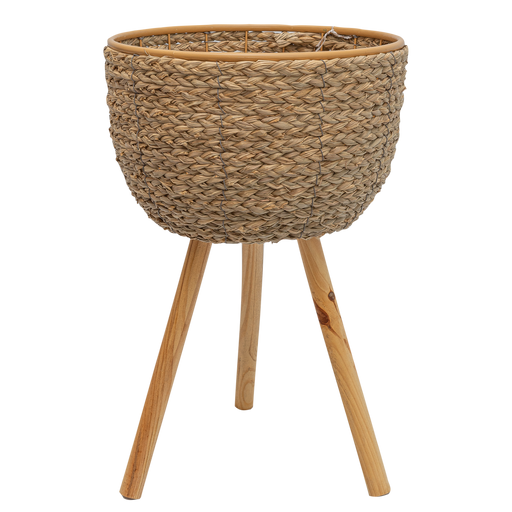 Sale
Sale
Wicker Planter
Original price $108.00Original price $108.00 - Original price $108.00Original price $108.00Current price $91.00$91.00 - $91.00Current price $91.00This wicker planter features a natural finish on the bamboo material and 3 legs that gives it substantial height. Making it the perfect addition to...
View full detailsOriginal price $108.00Original price $108.00 - Original price $108.00Original price $108.00Current price $91.00$91.00 - $91.00Current price $91.00Sale
Read More
< Previous article - Next article >
-
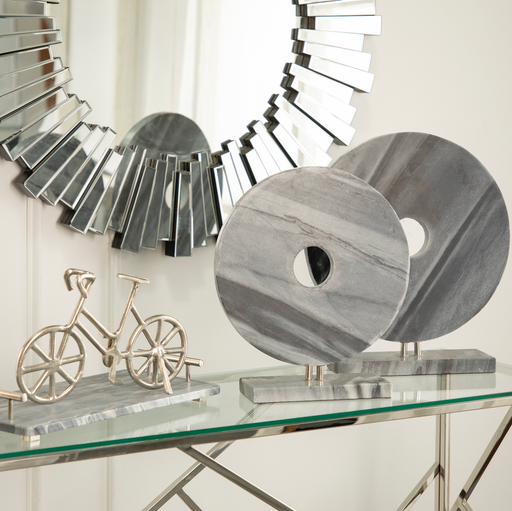
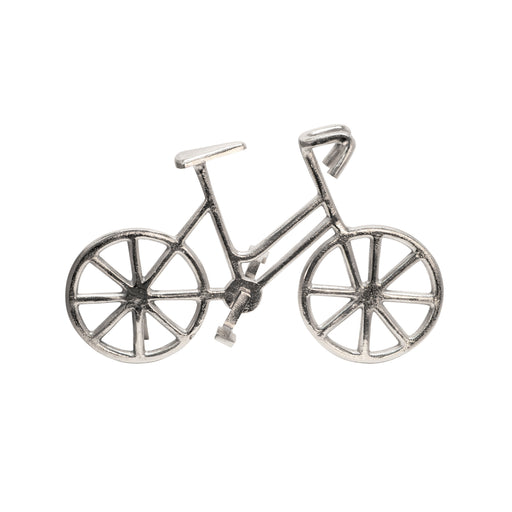
The Cute Silver Bicycle
Original price $30.00 - Original price $30.00Original price$30.00$30.00 - $30.00Current price $30.00This bike in silver is a fun piece which stands on its own. Its a charming piece for most homes and rooms. Why we love it? We love the fun aspect ...
View full detailsOriginal price $30.00 - Original price $30.00Original price$30.00$30.00 - $30.00Current price $30.00 -
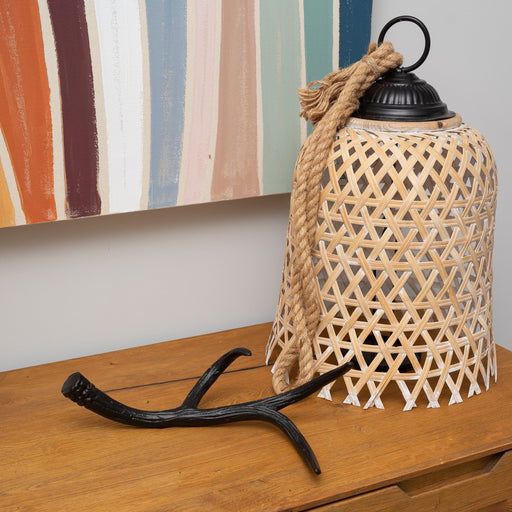
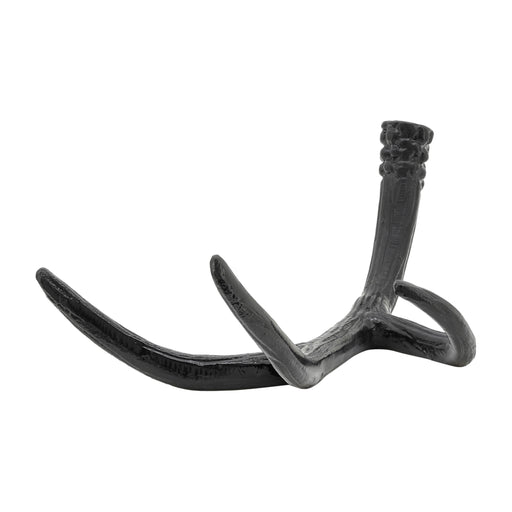
Rudy's Branch Table Deco
Original price $0.00 - Original price $0.00Original price $0.00$30.00$30.00 - $30.00Current price $30.00Looking for that finishing touch to complete your home décor? Look no further than the metal branch. This stylish accessory is perfect for any r...
View full detailsOriginal price $0.00 - Original price $0.00Original price $0.00$30.00$30.00 - $30.00Current price $30.00 -


Paulownia Wood Organic Vase, White
Original price $55.00 - Original price $55.00Original price$55.00$55.00 - $55.00Current price $55.00Wood, 6"d Unique Vase, White, the perfect home decor accessory to accent any corner, entryway or table in your living room, bedroom, and office. C...
View full detailsOriginal price $55.00 - Original price $55.00Original price$55.00$55.00 - $55.00Current price $55.00 -
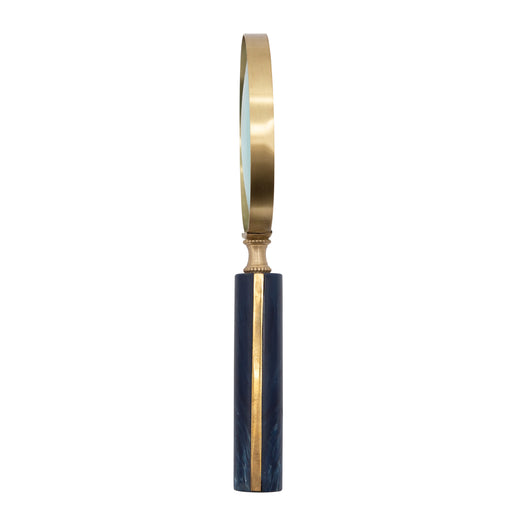
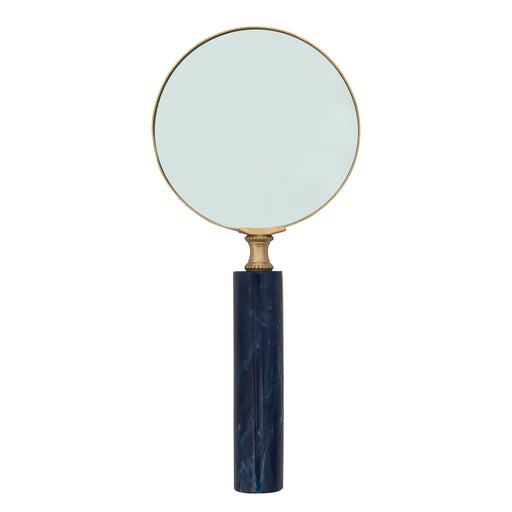 Sold out
Sold out
The Magnifying Glass
Original price $25.00 - Original price $25.00Original price$25.00$25.00 - $25.00Current price $25.00Looking for something unique to add to your home décor? Check out our clear and emphatic magnifying glass. A simple and elegant piece to charm any ...
View full detailsOriginal price $25.00 - Original price $25.00Original price$25.00$25.00 - $25.00Current price $25.00Sold out -
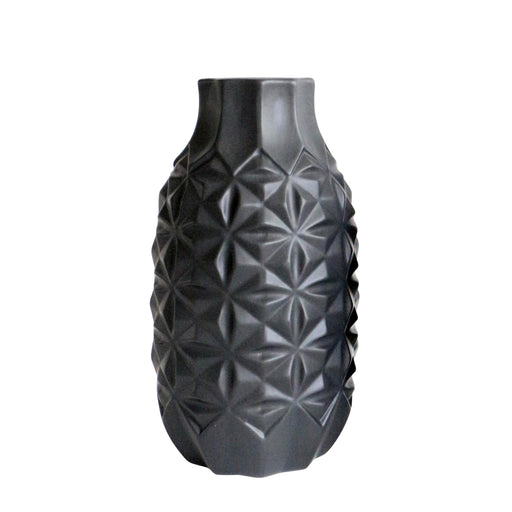
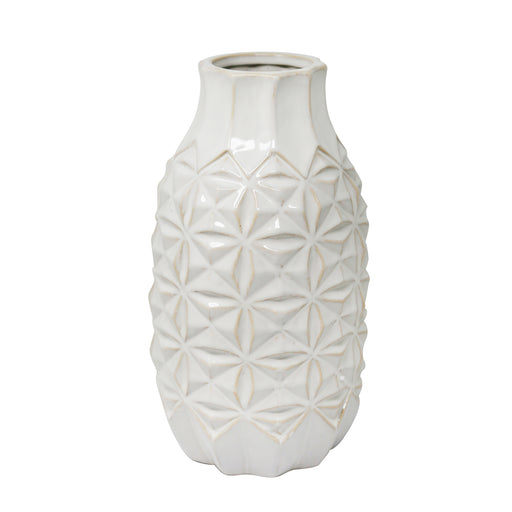
Ceramic B&W Patterned Vase
Original price $40.00 - Original price $40.00Original price$40.00$40.00 - $40.00Current price $40.00An exquisitely designed black vase which has a soft, ceramic texture. The traditional black color of the vase establishes a classical feel to the r...
View full detailsOriginal price $40.00 - Original price $40.00Original price$40.00$40.00 - $40.00Current price $40.00













































